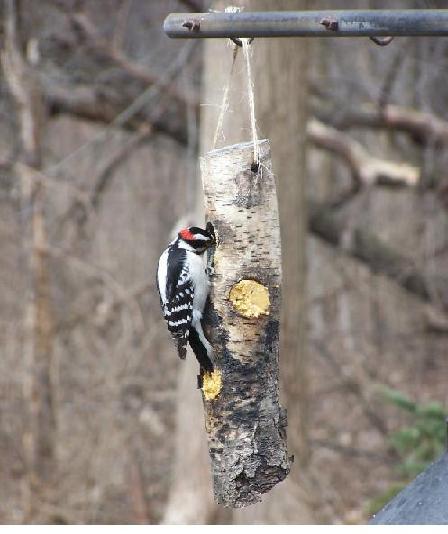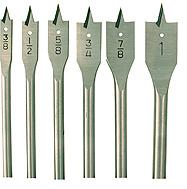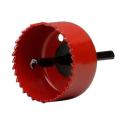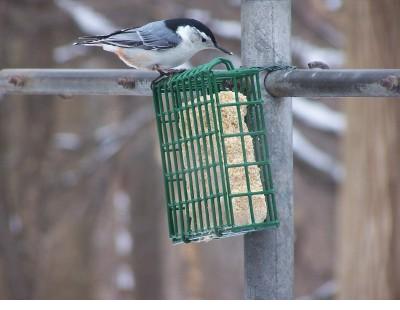
Make Your Own Bird Feeder - A Peanut Butter Log
by Grandpa Cliff 23 Mar 2006
_________________________________

Male Downy Woodpecker (female lacks red bar on head)
(photo by Grandpa Cliff)
In winter, some homeowners feed birds raw suet (fat trimmed from the meat), which can be bought from a butcher or the meat department of a grocery store. The suet can also be heated until it releases its fat as a hot liquid which is mixed with other food ingredients. As the liquid cools, it solidifies and helps hold the ingredients together.
Birds born in a particular year are fully grown when winter arrives, so winter food is not needed for growth. Food is, however, needed to supply the energy needed by the birds. Energy is required for the muscle contractions that allow a bird to fly, or walk, or chirp, or even eat or drink. Heat energy in winter is extremely important during the harsh northern winters when some birds freeze to death. But, if they get sufficient calories in their food, they can survive the cold days and colder nights.
Anyone who has done research or taken a nutrition course will know the best foods to choose to help birds survive the cold. Fat contains 9 times as many calories as does the same weight of sugar. That makes fat a very good food source for birds in winter. Peanut butter is high in both fat and calories, thereby making it an ideal food in winter when much natural food is under the snow in northern states of the U.S.
Construction of a Peanut Butter Log
Selecting the wood
a) Find a small fallen tree or a branch that is about 3 inches in diameter or about 9 inches in circumference. If the wood is already soft from rotting, it will not last very long, so select one that has firm wood.
b) A natural piece of wood looks much better than a piece of lumber. A birch with white bark is especially nice. The bark on the wood allows the birds to get a footing while feeding, although birds often use the bottom of the hole for their grip. If the piece of wood has a small branch, that is OK. You could cut off the branch, leaving a 1-2 inch base on which the birds could sit.
Cutting the wood
The wood should be cut about a foot long. It can be longer than 12 inches if you wish, but extra wood will make it heavier to handle and to suspend. You can saw the wood straight across, but I prefer a slight diagonal cut to give it a more interesting look.
Drilling a Suspension Hole
About an inch down from the end that you decide should be the top, drill a hole all the way through the wood. If you made a diagonal cut at the end of the wood, drill the hole about an inch down from the middle of the diagonal cut (see photo above). Cord, rope or wire can be used to hang the peanut butter log. The hole must be wide enough to string the hanger material through it. A ¼ inch or slightly smaller hole will usually be large enough.
Drilling the Feeder Hole


Spade Bits Holesaw
The peanut butter will go into a hole about 1¼ inches wide, and about 1¼ - 1½ inches deep. An electric drill with a spade bit makes the job quick and easy. A holesaw can also be used in place of the spade bit, but it makes a circular cut without removing the wood in the center of the cut. That wood must be removed with a chisel and hammer, and the bottom of the hole will be pretty ragged and could trap uneaten peanut butter that could then become rancid.
Is Peanut Butter Safe for Birds?
In the past, it was claimed that peanut butter was so sticky that it could get caught in the throats of birds and choke them. There is no evidence that birds can choke on peanut butter, and reliable sources make no such claim. However, birds have no salivary glands to moisten the peanut butter and help it slide down to the stomach. You can make it easier on the birds by mixing peanut butter with lard, cornmeal or grit. The lard would make the peanut butter more slippery; the cornmeal and grit would make it less sticky.
You might also wonder if fat would clog the arteries of the birds and negatively affect their health. That could be an important consideration for long-lived caged birds such as parrots, but the small birds that come to your feeder live in the wild where they don't live very long. For example, the average lifespan of a wild Chickadee is only about 2.5 years. Life in the wild is dangerous.
The most important predator of the birds that come to your feeder or yard is the cat. Cats kill many more birds than hawks, owls and other birds do. There are about 73 million cats in the U.S., 45 million of which are allowed to roam outside. Examining the food that they eat, it has been estimated that cats yearly kill hundreds of millions of birds, and over a billion small mammals (chipmunks, young rabbits, young squirrels, mice).
Should You Use Peanut Butter Alone?
I think smooth or chunky peanut butter does not need to be mixed with anything. You could try both and see what results you get. Do your birds eat the peanut chunks or throw them on the ground? If they aren't eaten, you could use the smooth kind of peanut butter.
If you would like to include something else for the birds, cornmeal would seem to be a very good choice. It is a very common practice to add small seeds to suet cake recipes, especially if you purchase the cakes in a store. I know that some kinds of caged birds remove the shells from around even the small seeds such as millet and canary seed. They couldn't do that for the seed mixed with peanut butter, so they either swallow the seeds whole or drop them on the ground for other birds to eat. Cornmeal is ground up corn kernels, so there is no seedcoat to worry about. The wild birds swallow small seeds with the peanut butter. In their gizzards, wild birds have grit (small stones like sand). A thin seedcoat off would be worn off there.
Recipes for a Peanut Butter Mix
The proportions of the things you put in a peanut butter mix doesn't matter much as long as you have enough peanut butter to keep the mix from falling apart. Click on this link to see some online recipes.
When Can You Feed Suet or Peanut Butter to Birds?
As summer temperatures climb, the peanut butter and suet get warmer, and therefore they get thinner. They may even drip. This is especially true when they are in direct sunlight. Some commercial suet cakes resist dripping.
In general, I would say that peanut butter mixtures and suet can be used safely in the northern U.S. states from about mid-September through mid-April. If a feeder is in the shade, that should extend the time. Everything depends on the actual temperature of the food. Therefore, the further you go to the south in the U.S., the fewer months you can use the peanut butter mixture, or the suet, each year. Besides causing dripping, high temperatures can cause the food to get rancid and unhealthy for the birds.
At my home, we have never fed suet to birds in the summertime until this year (2006). I live at the edge of a woods in New York State. The birds that visit my feeders daily are very numerous. The 'log' is visited daily by Downy Woodpeckers, Hairy Woodpeckers, Black-capped Chickadees, Tufted Titmice, and sometimes House Sparrows.
We fill the peanut butter log once or twice a day, and the birds manage to empty it long before their bedtime. I never have to worry about peanut butter going rancid even in the hot summer sun. It is always consumed rather quickly. On hot summer days, if the birds don't consume the peanut butter, I bring the feeder indoors until the daytime temperatures cool a bit.
Two things occurred as a result of using the peanut butter log this summer, one good and one bad. The bad part was that some of the oil in the peanut butter ran out of it and almost blackened the bottom half of the log. The birch log was no longer attractive. The good thing that happened is that I saw a large number of young birds that were brought to the feeder by their parents. The juvenile birds do not look exactly like the adults. It was interesting to see the differences, especially on the young male woodpeckers. The red coloration was located at the front half of the top of the head instead of at the very rear. Woodpeckers only come to my feeders for the suet or peanut butter. By halting the use of suet in summertime I had never before seen the different color pattern of the juvenile male woodpeckers.

Male White-breasted Nuthatch eating from a commercial peanut butter suet cake.
There is a small piece of food at the end of his beak.
(photo by Grandpa Cliff)
_________________________________
Go to the HOME page
Visitors since 30
Dec 2006